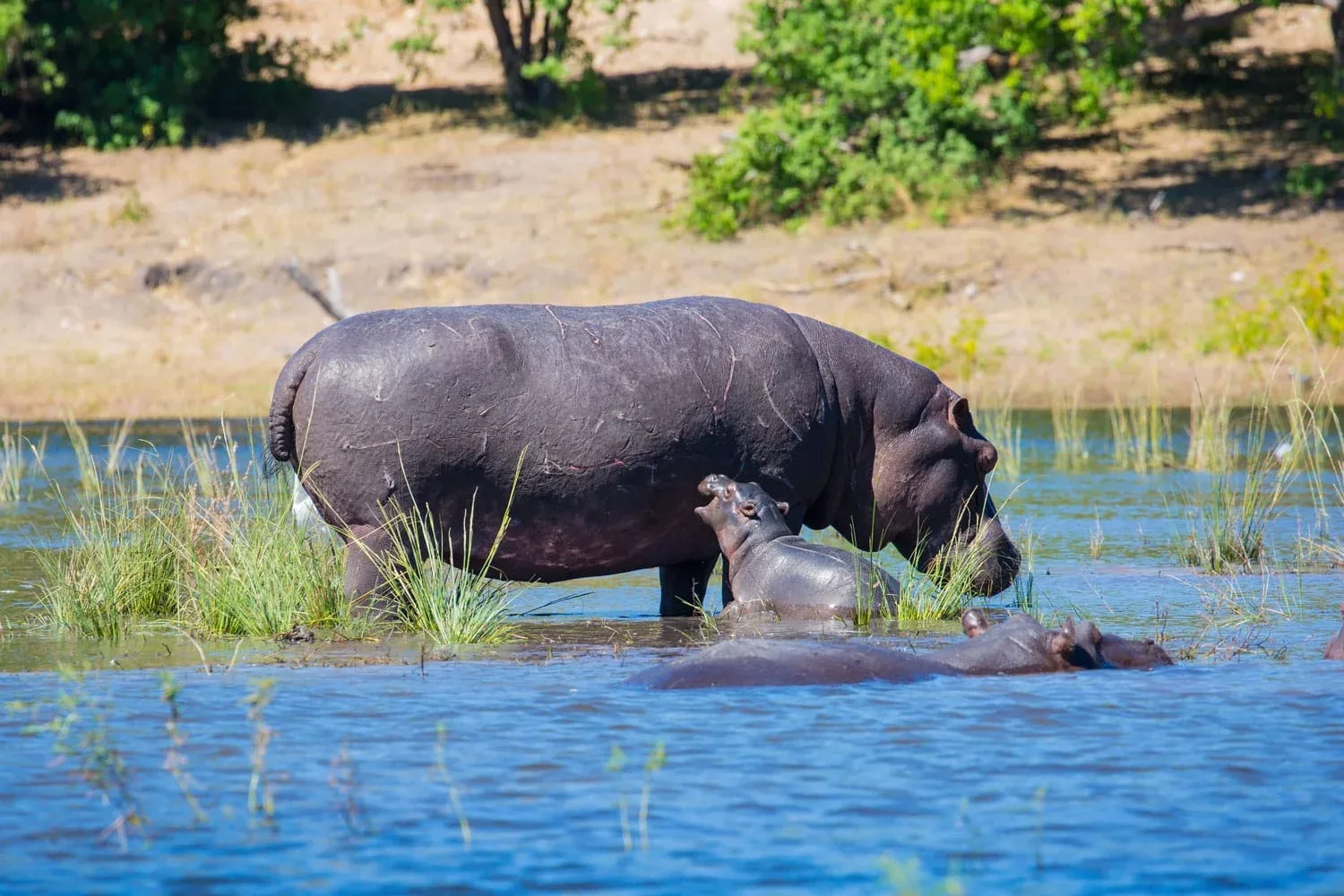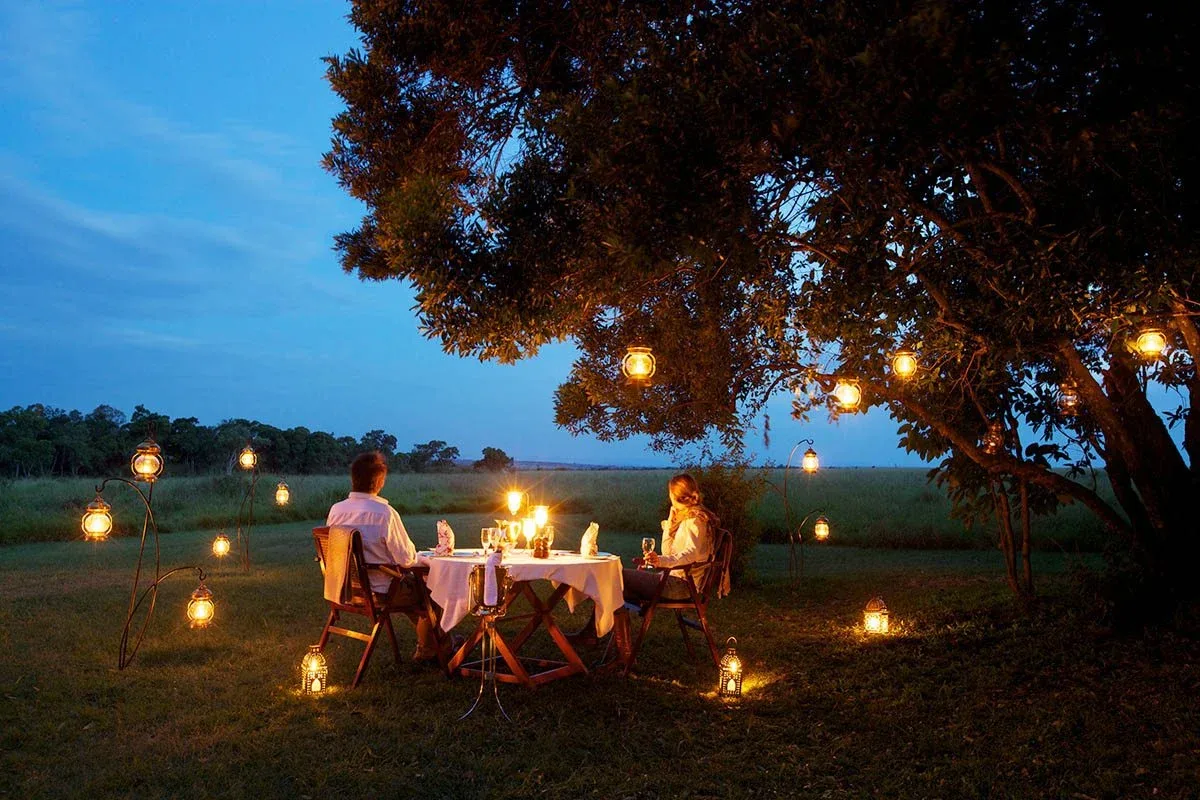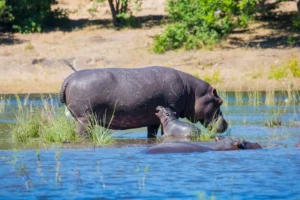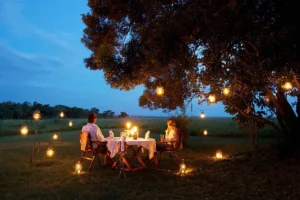Explore must-visit places in Namibia, from the mesmerizing dunes of Sossusvlei to the wildlife-rich Etosha National Park. Plan your journey through this diverse and breathtaking African landscape.
Namibia is a new country with incredible scenery and wildlife. It has been dubbed the “Land of the Brave” by many, and a visit to Namibia immediately makes you fall in love with this country. However, there’s much more to Namibia than what meets the eye. The country’s capital city, Windhoek (also known as “Windhoek City”), is home to nearly 300,000 people who live on both sides of its main river—the Orange River. The terrain around this city is pretty rough as it consists primarily of dunes that run several miles into the distance. If you’re looking for somewhere else to explore, then Namibia might be for you! Here are some other places worth visiting.
Sossusvlei
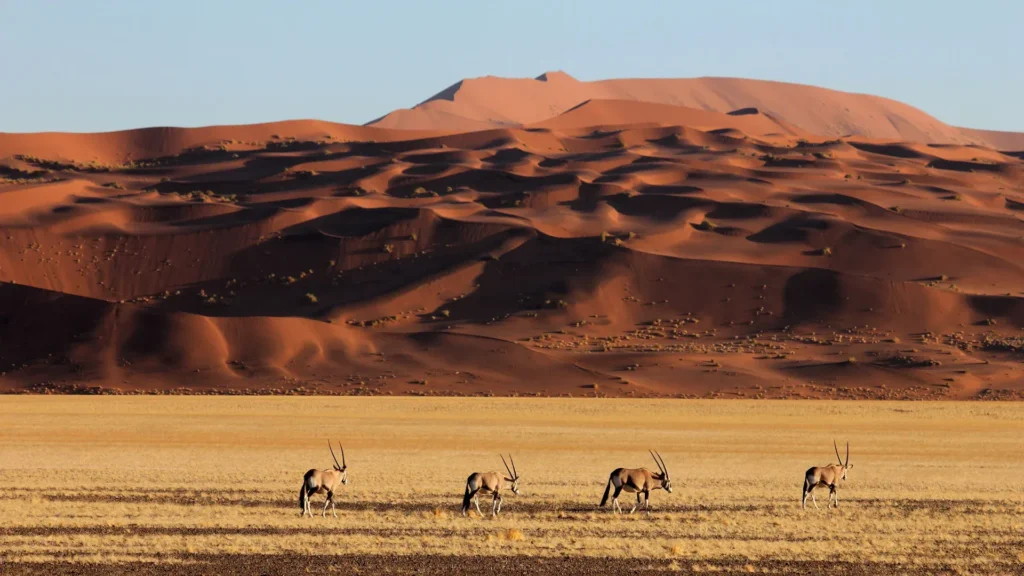
Sossusvlei, nestled within the Namib Desert, captivates visitors with its stark beauty—a vast white clay pan encircled by towering red sand dunes, among the highest in Namibia and renowned globally for their striking hues and sculptural shapes. This iconic landscape is not just a sight to behold but a playground for adventure and exploration.
Hiking enthusiasts can traverse the undulating ridges of these majestic dunes, offering breathtaking vistas of the surrounding desert landscape. Sightseers marvel at the interplay of light and shadow as the sun rises and sets, casting ever-changing patterns across the sandscape. For those seeking respite from the desert heat, nearby Dead Vlei offers a hauntingly beautiful contrast with its dried, cracked white clay floor dotted with ancient camel thorn trees.
Beyond its visual splendor, Sossusvlei beckons with activities that cater to every adventurer’s spirit. Visitors can plunge into the cool waters of natural rock pools at Sesriem Canyon, a testament to the power of water in this arid environment. Camping under a canopy of stars provides an unparalleled opportunity to immerse oneself in the silence and solitude of the desert night, a truly humbling experience.
Guided tours offer deeper insights into the unique flora and fauna adapted to survive in this harsh environment, while also revealing the rich cultural history of the area. These excursions often include visits to nearby attractions like the petrified dunes of Namib-Naukluft Park and the ancient rock engravings at Twyfelfontein, showcasing Namibia’s rich natural and cultural heritage.
In essence, Sossusvlei is more than just a destination—it’s a gateway to the soul-stirring beauty and profound serenity of the Namib Desert, inviting travelers to connect with nature in its purest form and create memories that linger long after the journey ends.
Etosha National Park

Etosha National Park stands as a crown jewel of Namibia’s conservation efforts, spanning vast expanses of arid savannah, saline desert plains, and shimmering salt pans. As one of Africa’s largest national parks, it boasts a rich tapestry of ecosystems that support an astonishing diversity of wildlife, making it a paradise for nature enthusiasts and photographers alike.
The park’s grasslands and waterholes serve as vital habitats for a myriad of species, with over 500 types of birds alone gracing its skies. From majestic raptors to vibrant flocks of flamingos, Etosha offers unparalleled birdwatching opportunities year-round, drawing avian enthusiasts from around the globe.
However, it’s the park’s iconic mammals that steal the spotlight. Etosha is renowned for its abundant populations of elephants, lions, and other charismatic megafauna. The park’s expansive plains provide excellent vantage points for observing these animals in their natural habitat, whether they’re congregating around waterholes during the dry season or traversing the open grasslands in search of prey.
Beyond its grasslands, Etosha encompasses a mosaic of diverse ecosystems, each supporting specialized flora and fauna adapted to Namibia’s harsh climate. Woodlands offer shelter to elusive leopards and agile antelopes, while seasonal swamps attract a wealth of water-dependent species. The stark desert-like conditions of the Etosha Pan itself provide a surreal backdrop for wildlife encounters, particularly when the vast white expanse shimmers under the African sun.
For visitors, Etosha National Park promises more than just game viewing; it offers an immersive journey into the heart of Africa’s natural wonders. Self-drive safaris along well-maintained roads allow for flexible exploration, while guided tours provide in-depth insights into the park’s ecological complexities and conservation challenges. Comfortable lodges and campsites scattered across the park cater to diverse tastes, ensuring a memorable stay amidst Namibia’s untamed beauty.
In essence, Etosha National Park epitomizes Namibia’s commitment to preserving its natural heritage while offering visitors an unforgettable safari experience. Whether you’re a seasoned wildlife enthusiast or a first-time adventurer, Etosha’s unparalleled biodiversity and breathtaking landscapes promise to inspire and captivate, leaving an enduring impression of Africa’s wild splendor.
Kunene Region

The Kunene region is a remote area in northern Namibia that’s home to the Himba people. The Kunene River, which runs through this region, is one of the longest rivers in Namibia and serves as an essential water source for humans and wildlife.
The Himba are semi-nomadic people who live off of livestock farming and hunting. They also grow crops such as sorghum for themselves but primarily rely on their herds for survival during dry seasons when rain isn’t prevalent enough for them to sustain themselves with other means like planting crops at home or harvesting fruit from trees nearby (which can often be scarce because there isn’t much sunlight during winter).
Damaraland

Damaraland is a region in Namibia. It’s a great place to see wildlife, and the name comes from the Damara tribe, who are indigenous to the area. The Himba people also live here and are known for their traditional lifestyle involving hunting, gathering firewood, and other activities like making leather goods.
Damaraland has been designated as a World Heritage Site because it contains some of Namibia’s most beautiful landscapes, including mountains covered in red sandstone cliffs with deep valleys where water gushes down from their peaks into pools below them.
Swakopmund

Swakopmund is a coastal town in Namibia with a population of about 15,000 people. The town is known for its beach and dunes, which are the perfect place to relax after a long day exploring the area. In addition to being home to one of the most beautiful beaches on earth (the huge Victoria Bay), Swakopmund has many other attractions worth exploring:
- German colonial architecture
- Traditional African culture interacting with modern Western life.
Cape Cross Seal Colony

The Cape Cross Seal Colony, nestled on Namibia’s windswept Cape Cross Peninsula, stands as a captivating testament to nature’s abundance and diversity. Home to one of the largest colonies of Cape fur seals in the world, this site offers visitors a unique opportunity to witness the hustle and bustle of these charismatic marine mammals up close.
The seals, numbering in the tens of thousands during peak breeding seasons, inhabit the rocky shores and shallow waters surrounding the peninsula. From the safety of the viewing pier, visitors can observe these playful creatures as they bask in the sun, socialize, and care for their young. The air fills with their distinctive calls and the pungent aroma of the sea—a sensory reminder of the colony’s vibrant life.
For a more immersive experience, guided boat tours venture closer to the colony, providing unparalleled views and insights into the seals’ behavior and habitat. These tours also offer a chance to appreciate the rugged beauty of the coastline and its rich marine ecosystem, which sustains not only the seals but a diverse array of seabirds and other wildlife.
The Cape Cross Seal Colony is not only a natural spectacle but also a hub of scientific research and conservation efforts. Visitors can learn about ongoing projects aimed at protecting these iconic creatures and preserving their coastal habitat. Educational displays at the visitor center delve into the seals’ biology, behavior, and the ecological significance of their presence in Namibia’s marine environment.
Beyond its ecological importance, Cape Cross holds historical significance as well. It was here in 1486 that the Portuguese explorer, Diego Cão, erected a stone cross to mark his journey along the African coast—a testament to the early European exploration of the continent.
In summary, the Cape Cross Seal Colony offers a blend of natural wonder, educational opportunities, and historical intrigue, making it a must-visit destination for travelers exploring Namibia’s coastal treasures. Whether viewed from shore or sea, the colony leaves an indelible impression, showcasing the resilience and beauty of life along Africa’s rugged Atlantic coastline.
Windhoek, Namibia’s Capital City
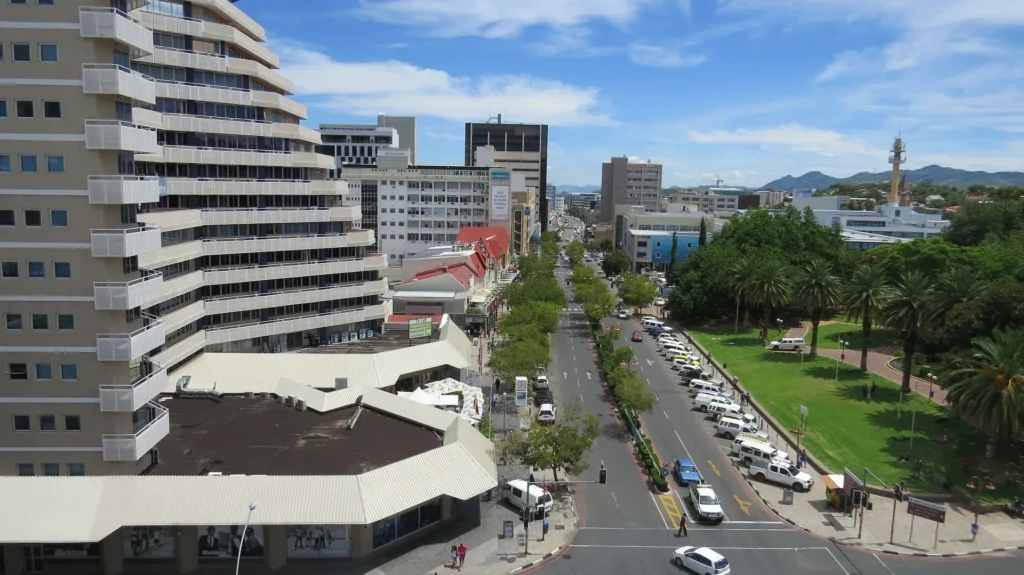
Windhoek, Namibia’s capital city and largest city, is both a university town and the seat of government. It’s also home to many businesspeople involved in commerce or industry. You’ll find this city bustling with activity day and night—it’s not uncommon for you to see people walking around in their work clothes at all hours of the day!
Windhoek is a good place for travelers who want an opportunity to meet Namibians and learn more about them and their culture. There are plenty of festivals each year that celebrate different aspects of life within Namibia: such as music festivals celebrating traditional African dance performances; film festivals where attendees can watch movies made by filmmakers from across Africa; literary events where writers present their works before audiences; etcetera.
Fish River Canyon
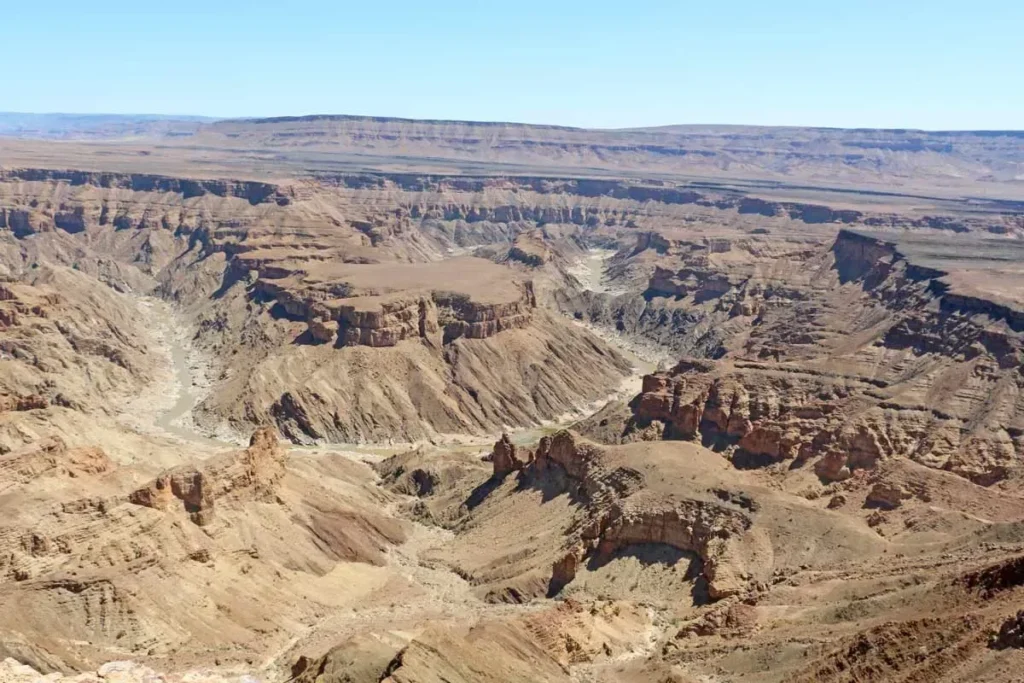
Fish River Canyon is a canyon in the Namib Desert located in the northern part of Namibia. It’s one of Namibia’s most popular tourist destinations, with crystal clear water and beautiful scenery. The canyon was formed by erosion from sandstone cliffs over time, creating a spectacular landscape that can be seen from above and below ground level.
The Fish River itself flows through this area. Still, it isn’t visible or accessible until you’ve passed through it on your way to other attractions such as Etosha National Park and Skeleton Coast National Park (within an hour’s drive).
Skeleton Coast
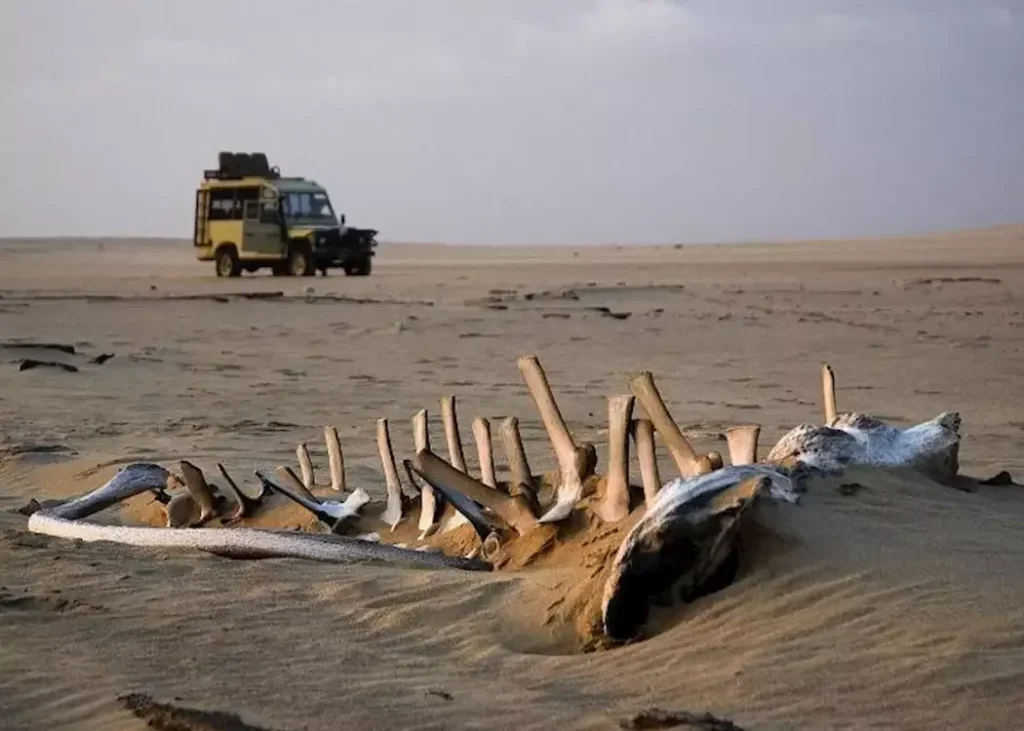
The Skeleton Coast is a coastal region in northern Namibia, bordering Namibia’s coast to the south. It consists of a series of sandy beaches with dunes and cliffs up to 100 meters high. The area has been declared a national park and was named after its abundance of whale bones that litter these beaches, mainly made of limestone rock formations formed millions of years ago when sea levels rose due to melting glaciers.
The Skeleton Coast also has valuable marine resources such as coral reefs, seagrass beds (a type of plant), sharks, and rays; it provides habitat for marine life such as dolphins and whales, which come here to breed or rest before migrating further southwards towards South Africa’s coastlines where they feed on plankton found in shallow waters off shorelines during springtime months between December through April every year.
Twyfelfontein and The Burnt Mountain Trail
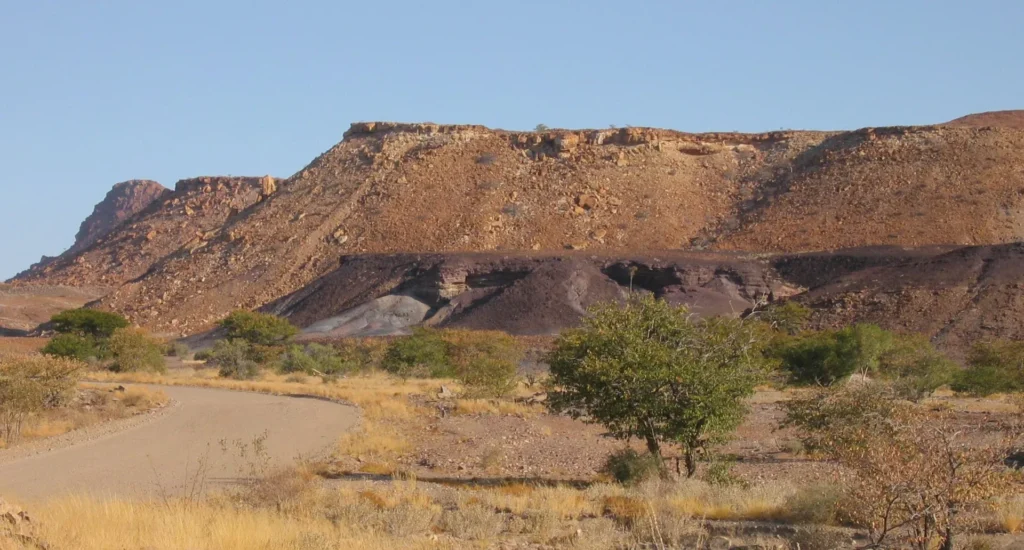
When you think of Namibia, Twyfelfontein probably isn’t the first place that comes to mind. It’s a small village in the middle of nowhere and is known for its rock art, but there are other reasons to visit Twyfelfontein. If you have time, consider adding this trail to your list!
The Burnt Mountain Trail starts at Twyfelfontein and takes approximately 6 km to reach its peak at 1,940 meters above sea level (5,821 feet). The hike is steep but not overly complicated. Suppose you take it slow enough not to tire yourself out too quickly or get injured by falling slopes while hiking uphill (which can happen). In that case, this trail should be manageable enough for anyone looking for a nice day hike out in nature with some solitude while exploring some beautiful scenery along the way.
Spitzkoppe Peaks and Arch Rock Campsite

- Location: The Spitzkoppe Peaks and Arch Rock Campsite is located in the Namib Desert, approximately 90km from Swakopmund.
- How to get there: The easiest way to reach this area is by plane or helicopter. You can also take a scenic flight over the Namib Desert on an acrobatic plane, which lasts about 30 minutes. If traveling with your vehicle, start by heading south along Rte 3 until you reach Swakopmund (about 6 hours). From here, it’s about an hour’s drive down Rte 1 in either direction until you reach Wapadu Roadhouse, where there are several options for overnight accommodations if needed!
- What to do at Spitzkoppe? At nightfall, head back into town for dinner at one of its many restaurants before retiring early so as not to miss any sunrise views over Skeleton Coast National Park during morning light hours tomorrow morning! After breakfast, pack up the camp gear and ensure everyone has their passports ready because we’ll be heading out soon after breakfast.
Twyfelfontein Country Lodge.

Twyfelfontein Country Lodge is a 3-star property that offers a restaurant, lounge, bar, and swimming pool. It also has an on-site laundry service, car rental, and room service if you’re looking to relax at the end of your day.
Namibia is a destination where you can genuinely venture into nature. Namibia has many natural wonders, including the Skeleton Coast and Etosha Pan. It’s also home to Africa’s oldest national park, Namib National Park. The country also has plenty of wildlife and history—it was once part of South Africa until independence in 1990. Still, it maintains its own culture and cuisine throughout its territory.
Conclusion
In conclusion, Namibia stands as a diverse tapestry of natural wonders, offering visitors a spectrum of experiences from the towering dunes of Sossusvlei to the wildlife spectacles of Etosha National Park. Whether you seek adventure in the rugged landscapes of Damaraland, cultural encounters in vibrant towns like Swakopmund, or serene moments along the Skeleton Coast, Namibia promises unforgettable journeys and lasting memories amidst its unparalleled beauty.

